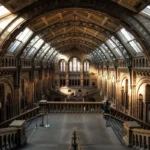In this digital world, the magic of 360-degree virtual tours has made accessing new places and experiences easier. Whether you’re trying to decide where to go on your next vacation, you’re house hunting, or you’re simply interested in what the Taj Mahal looks like at sunrise, these virtual tours will let you immerse yourself in places you might never actually visit-all from the comfort of your home. Let’s go back to what 360 virtual tours are, why they are amazing, and how you can use them to explore the world in a whole new way.
What is a 360-Degree Virtual Tour?
The best explanation for a 360-degree virtual tour would be it’s a digital experience wherein one can practically find their way through an environment in which one was going to stand. The phrase “360-degree” refers to actually being able to look in any direction-up, down, left, or right, for that matter-to make a panoramic view. You can change your point of view by panning and/or swiping on your screen to allow yourself the latitude of roaming in this space at your pace.
Most of these tours make use of actual photographs taken by special cameras that stitch multiple photos together to allow a seamless and interactive experience. Other 360-degree virtual tours go further in enhancing their experience, such as providing additional features like clickable hotspots, background music, or other detailed information. Such features make your exploration even more engaging.
Why Are 360-Degree Virtual Tours So Popular?
So, why has everyone been abuzz about 360 degree virtual tours? There are a few reasons why these immersive experiences have become so hot and in demand.
1. Ultimate Convenience
Let’s face it: traveling isn’t always easy. From flights to book and accommodations to arrange, to an itinerary to plan, things can get complicated-and expensive. In the case of 360-degree tours, all that hassle is taken out. Be it a tour of the local museum or distant countries, you jump in and out of virtual tours without leaving your couch.
2. Access to Unique Places
One of the coolest things about 360-degree tours is that they give you access to places that might prove difficult or impossible to visit in real life. Ever dreamed of walking around inside the Sistine Chapel? Or walking around a mansion that is totally out of your league to buy? With virtual tours, you can do just that. It’s like having a backstage pass to some of the most exclusive or remote spots around the world.
3. Immersive Experience
Unlike traditional photos or videos, 360-degree virtual tours make you feel like you’re truly “in” the environment. The interactive nature allows you to engage with the space in a more meaningful way, letting you discover little details you might otherwise miss. You’re not just passively watching; you’re actively exploring!
4. Perfect for Decision-Making
Can’t seem to make up your mind about a hotel when planning your vacation? Planning to buy a house and won’t be able to physically see it? 360 virtual tour are everything when trying to make decisions. It gives you a real sense of space, scale, and layout, which really helps in making more informed decisions. Like getting a private tour without the pressure.
How Can You Use 360-Degree Virtual Tours?
Now that we have discussed why 360-degree tours are great, it is time to look at some of the specific usages by which you may want to utilize them in daily life.
1. Travel and Tourism
This is probably the most overt use for virtual tours: travel agencies, hotels, and even local tourist attractions provide 360-degree tours to give one an idea of the place before booking a trip. You can check out a hotel room, take a stroll around the streets of Paris, or even have a hike through a national park-all without having to board a plane.
2. Real Estate
360-degree virtual tours also come out as huge winners in the real estate world. If you are house hunting, they enable a tour of homes without having to drive all over town. You get to feel the general layout of a home, be able to look around the rooms, and even peek into the backyard. It saves lots of time and enables you to narrow down your choices before scheduling an in-person visit.
3. Education and Museums
Most educational institutes and museums are lately adopting 360-degree tours for bringing exhibits to life. Whether you tour historic landmarks as a student or peruse an online gallery as an aficionado of art, virtual tours let you interact with educational content in a unique way. Guided virtual tours, some of which offer interactive elements that further enhance your learning experience.
If you have a big event or exhibition planned, why not offer your potential clients or visitors a 360-degree tour of your space? That is just a great way to show people what to expect, and that could make events really pop.




